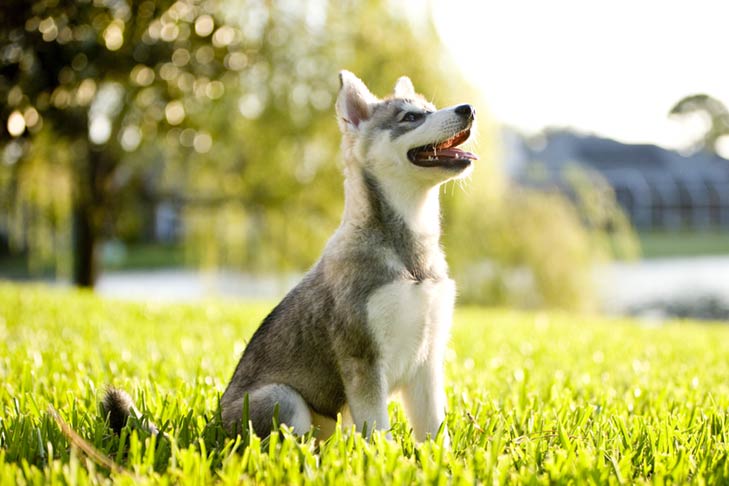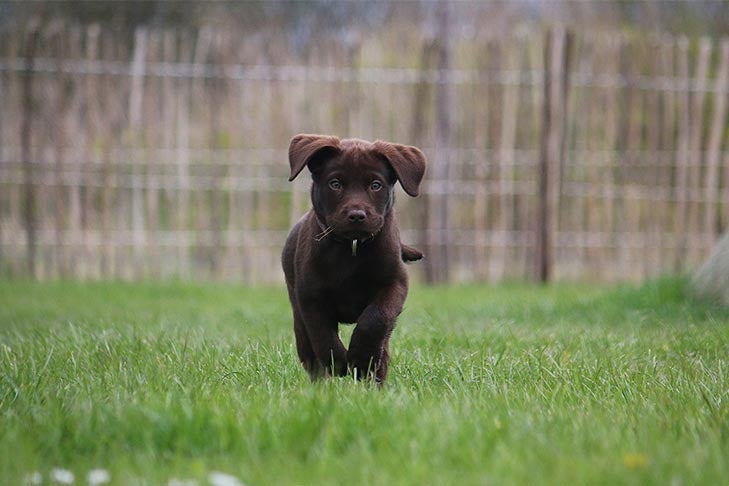How to Teach a Dog Loose-Leash Walking
In competition obedience training, “heel” means the dog is walking on your left side with their head even with your knee while you hold the leash loosely. Puppy training can be a little more relaxed, with the goal being that they walk politely on a loose leash without pulling. Some trainers prefer to say “let’s go” or “forward” instead of “heel.”
Whatever cue you choose, be consistent and always use the same word. Whether your puppy walks on your left side or your right side is completely up to you. But be consistent about where you want them, so they don’t get confused and learn to zig-zag in front of you.

The truth is that a puppy is never too young to start obeying commands, at least most of the time. But most puppies will need to hit certain age before they are able to understand voice commands. Even then, you will still need to be careful with your choice of words. The most basic command to start on is to sit. You will probably not have much luck with “Fido, come take off my shoes”.
Regardless of age and dog breed, most trainers will suggest that you start training your pup as soon as he is able to walk and run. A puppy that can walk next to you on the way to the door can start with their command training. This usually happens at age of 5 weeks.
You need to be a consistent leader once you have taught your pup how to listen and obey your commands. Dogs understand how hierarchy works, but he needs to know who is the leader of the pack. Being consistent refers to using the same commands as the same cue as to not confuse your dog. If you feel that you need an extra help, it is ok to get the help of a professional trainer.
Jump Ahead:
To start off on the right foot (and paw!) with your pup, they’ll need to know what you expect. This will make them feel secure in their ability to meet the goals laid out going forward.
The foundation of training should be based on positive reinforcement. Positive reinforcement is the process of giving a dog (or person!) a reward to encourage the behavior you want, like getting a paycheck for going to work. The idea is not to bribe with the behavior but to train it using something your dog values.
Avoid using punishment such as leash corrections or yelling. Punishment can cause a dog to become confused and unsure about what is being asked of them. It is important to remember that we can’t expect dogs to know what they don’t yet know–just like you wouldn’t expect a 2-year-old child to know how to tie their shoes. Patience will go a long way in helping your new puppy learn how to behave.
Reinforcement can be anything your dog likes. Most people use small pieces of a “high-value” food for training treats— something special, such as freeze-dried liver or even just their kibble. Lavish praise or the chance to play with a favorite toy can also be used as a reward. Dogs must be taught to like praise. If you give the dog a treat while saying “Good dog!” in a happy voice, they will learn that praise is a good thing and can be a reward. Some dogs also enjoy petting. Food is often the most convenient way to reinforce behavior.
Puppies can begin very simple training starting as soon as they come home, usually around 8 weeks old. Always keep training sessions brief—just five to 10 minutes—and always end on a positive note. If your puppy is having trouble learning a new behavior, end the session by reviewing something they already know and give them plenty of praise and a big reward for their success. If your puppy gets bored or frustrated, it will ultimately be counterproductive to learning.
